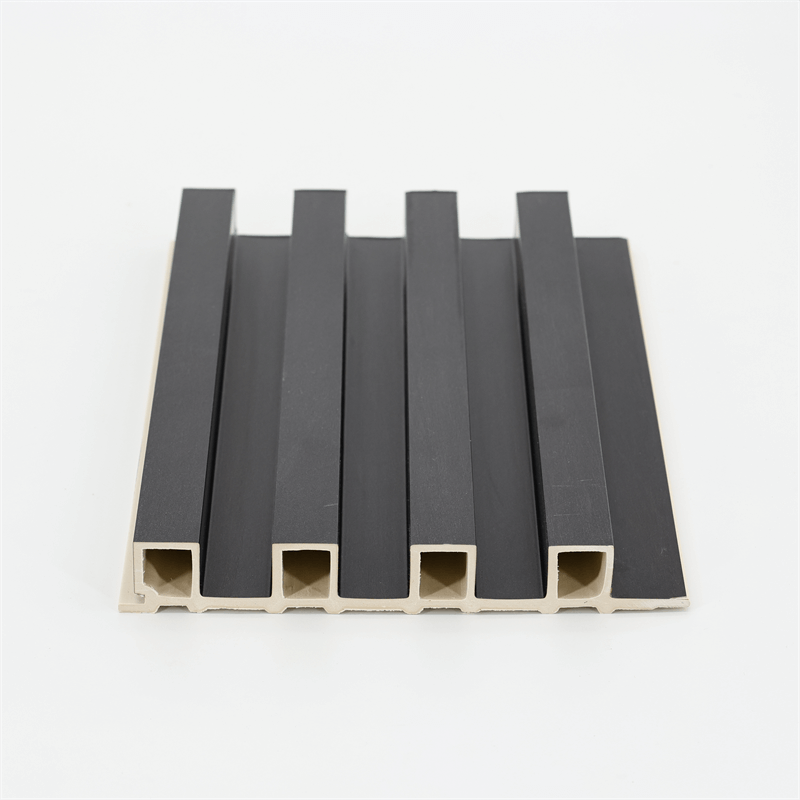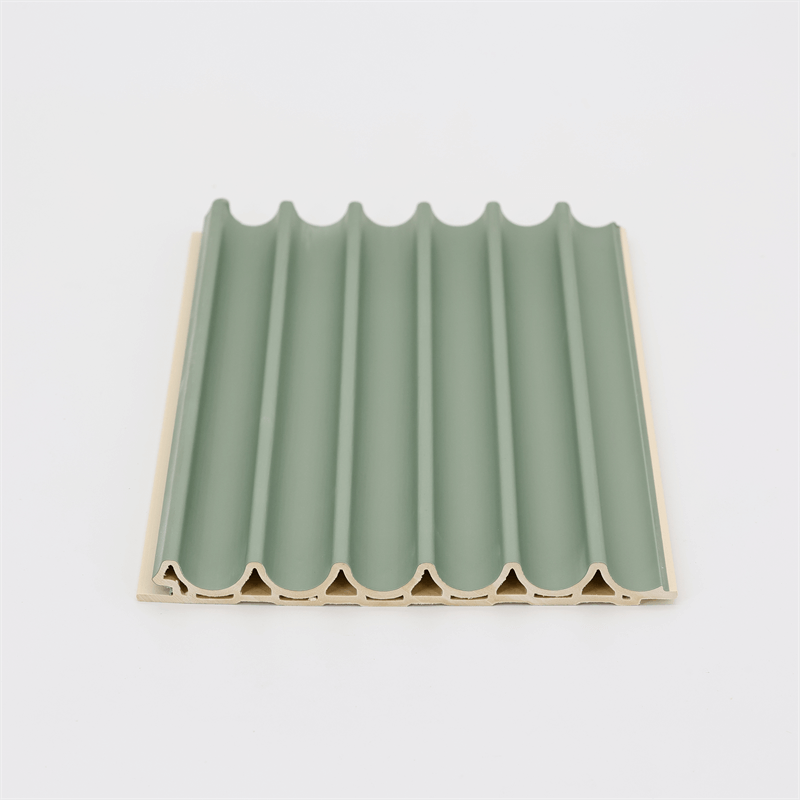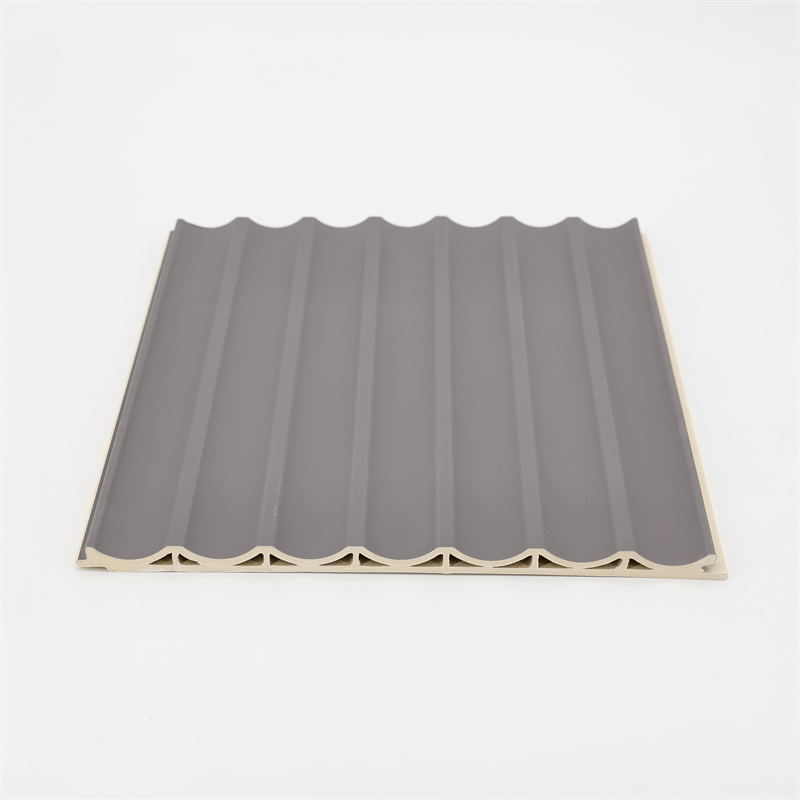In recent years, there has been a growing emphasis on sustainable and energy-efficient construction practices.
As the demand for environmentally friendly building materials continues to rise, Wood-Plastic Composite (WPC) wall panels have emerged as a promising solution.
These panels offer a combination of sustainability, durability, and energy efficiency, making them an ideal choice for eco-conscious construction projects.
This essay explores the benefits of using WPC wall panels in sustainable and energy-efficient construction, focusing on their impact on resource conservation, indoor environmental quality, thermal performance, and renewable energy integration.
I. Resource Conservation and Environmental Sustainability:
One of the key advantages of WPC wall panels lies in their contribution to resource conservation and environmental sustainability.
These panels are composed of a blend of recycled wood fibers and plastic, reducing the demand for virgin materials and diverting waste from landfills.
By utilizing recycled materials, WPC panels help conserve natural resources and decrease the carbon footprint associated with traditional construction materials.
Moreover, the manufacturing process of WPC panels consumes less energy and generates fewer greenhouse gas emissions compared to other building materials.
This reduced environmental impact aligns with the objectives of sustainable construction practices and supports the transition towards a greener and more sustainable built environment.
II. Indoor Environmental Quality:
Indoor environmental quality is a crucial factor in sustainable construction, as it directly impacts the health and well-being of building occupants.
WPC wall panels contribute to improved indoor environmental quality through their low emission levels and moisture resistance.
Unlike some traditional wall coverings, WPC panels do not release harmful volatile organic compounds (VOCs) into the indoor air, promoting a healthier and more comfortable living or working environment.
Additionally, their moisture resistance helps prevent the growth of mold and mildew, reducing the risk of respiratory issues and allergies.
By incorporating WPC wall panels in construction projects, architects and builders can create spaces that prioritize the health and well-being of occupants, fostering a more sustainable and conducive indoor environment.
III. Thermal Performance and Energy Efficiency:
Energy efficiency is a fundamental aspect of sustainable construction, and WPC wall panels contribute to improved thermal performance.
These panels possess excellent insulation properties, helping to reduce heat transfer between the interior and exterior of a building.
By minimizing heat loss during colder months and heat gain during warmer months, WPC panels assist in maintaining a stable indoor temperature, reducing the reliance on mechanical heating and cooling systems.
This, in turn, leads to significant energy savings and lower carbon emissions.
Furthermore, the integration of WPC panels with other energy-efficient systems, such as energy-efficient windows and solar shading devices, can enhance the overall thermal performance of a building.
By creating a well-insulated envelope, WPC wall panels facilitate energy-efficient construction practices and promote sustainable energy consumption.
IV. Renewable Energy Integration:
Renewable energy sources, such as solar and wind power, play a vital role in sustainable construction.
WPC wall panels can be seamlessly integrated with renewable energy systems, further enhancing the energy efficiency and sustainability of a building.
For instance, the lightweight nature of WPC panels makes them suitable for the installation of photovoltaic (PV) solar panels on the exterior walls.
This integration allows for the generation of clean and renewable energy, reducing the reliance on conventional energy sources and decreasing the carbon footprint of the building.
By combining WPC wall panels with renewable energy systems, architects and builders can create structures that not only reduce energy consumption but also actively contribute to the generation of clean energy, fostering a more sustainable and resilient built environment.
WPC wall panels offer a sustainable and energy-efficient solution for modern construction practices.
Their utilization promotes resource conservation, reduces environmental impact, and enhances indoor environmental quality.
Additionally, these panels contribute to improved thermal performance, leading to energy savings and reduced carbon emissions.
By seamlessly integrating with renewable energy systems, WPC panels further amplify the sustainability of construction projects.
As the world continues to prioritize sustainable and energy-efficient practices, WPC wall panels stand as a valuable asset in the pursuit of a greener future.
Their versatility, durability, and eco-friendly attributes make them an ideal choice for architects, builders, and homeowners committed to sustainable construction practices.
By embracing WPC wall panels, we can create buildings that not only meet the demands of the present but also contribute to a more sustainable and energy-efficient future.

In conclusion, the use of WPC wall panels in sustainable and energy-efficient construction practices offers numerous benefits.
These panels contribute to resource conservation and environmental sustainability by utilizing recycled materials and reducing carbon emissions.
The improved indoor environmental quality provided by WPC panels ensures a healthier and more comfortable living or working environment for occupants.
The thermal performance of WPC wall panels enhances energy efficiency by minimizing heat transfer and reducing reliance on mechanical heating and cooling systems.
When combined with renewable energy integration, such as solar panels, WPC panels can actively contribute to clean energy generation, further reducing the carbon footprint of buildings.
By incorporating WPC wall panels in construction projects, architects, builders, and homeowners can create spaces that prioritize sustainability, energy efficiency, and occupant well-being.
These panels serve as a testament to the potential of innovative materials in shaping the future of construction, where environmental consciousness and energy efficiency go hand in hand.
As the world continues to address the challenges of climate change and environmental degradation, embracing sustainable and energy-efficient construction practices becomes more crucial than ever.
WPC wall panels offer a practical and sustainable solution, contributing to the creation of buildings that are not only visually appealing but also environmentally responsible.
In the pursuit of a greener and more sustainable future, the integration of WPC wall panels paves the way for a paradigm shift in the construction industry.
By embracing these panels and adopting sustainable construction practices, we can make significant strides towards reducing our environmental impact and creating a better world for future generations.


